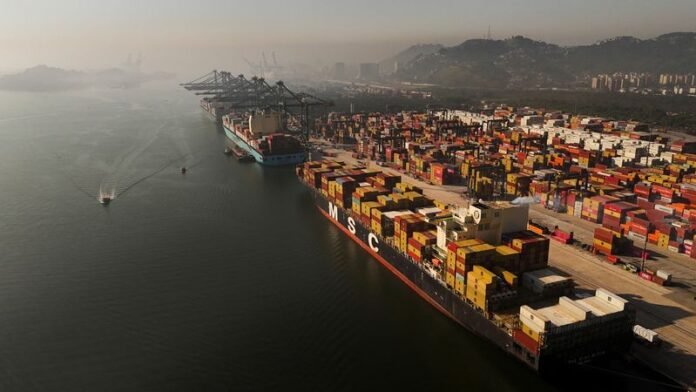The Strait of Hormuz remains operational but is under increasing scrutiny as geopolitical tensions in the Middle East intensify. J.P. Morgan has raised the disruption risk assessment for the vital oil and gas transit corridor to level 2 out of 5, citing persistent electronic interference affecting commercial ship navigation systems.
The interference, reported by the Joint Maritime Information Center, is creating operational and navigational challenges.
The strait handles 20–30% of global oil trade, including 34% of seaborne oil exports, 30% of LPG shipments, 20% of LNG trade, and 18% of chemical cargoes, according to data from Clarksons cited by J.P. Morgan.
It also supports up to 3% of global container trade and 2% of dry bulk volumes. Despite the relatively modest share of container traffic, any disruption could force rerouting through Asian transshipment hubs, potentially straining ports like Singapore and Colombo.
J.P. Morgan’s Global Trade Chokepoint Monitor, notes that while operations in the Strait of Hormuz remain stable, the region has emerged as a key risk area following regional escalation.
The brokerage includes insights from maritime analyst Lars Jensen, who warned that even limited disruptions could trigger cascading congestion across Asia.
Industry participants remain cautious. Maersk executives, speaking at J.P. Morgan’s recent European Industrials conference, stressed that global liners would require a formal peace agreement, not just a temporary truce, before adjusting networks. Such reconfigurations are logistically complex and costly.
Elsewhere in the region, trade through the Suez Canal remains heavily impaired. Container vessel operations are still down by 90%, with overall transits more than 60% below average, primarily due to ongoing Houthi attacks on commercial vessels in the Red Sea.
Despite a 15% fee discount offered by the Suez Canal Authority, major shipping lines have yet to return in significant numbers.
J.P. Morgan analysts maintain that capacity constraints remain most pronounced at the Suez Canal and the Bab el-Mandeb Strait.
These chokepoints continue to operate under level 4 disruption ratings, reflecting severe but not total operational impairment.
While the Strait of Hormuz’s current classification at level 2 indicates partial disruption risk, analysts caution that the situation remains fluid.
The U.S. Federal Maritime Commission is also investigating conditions at seven global chokepoints, including the Strait of Hormuz, as part of a broader review of international shipping constraints.
Trade volumes through the Strait of Hormuz have remained stable so far, but J.P. Morgan’s analysis suggests vigilance is warranted.
Any further escalation could have significant consequences for global energy flows and supply chains.







